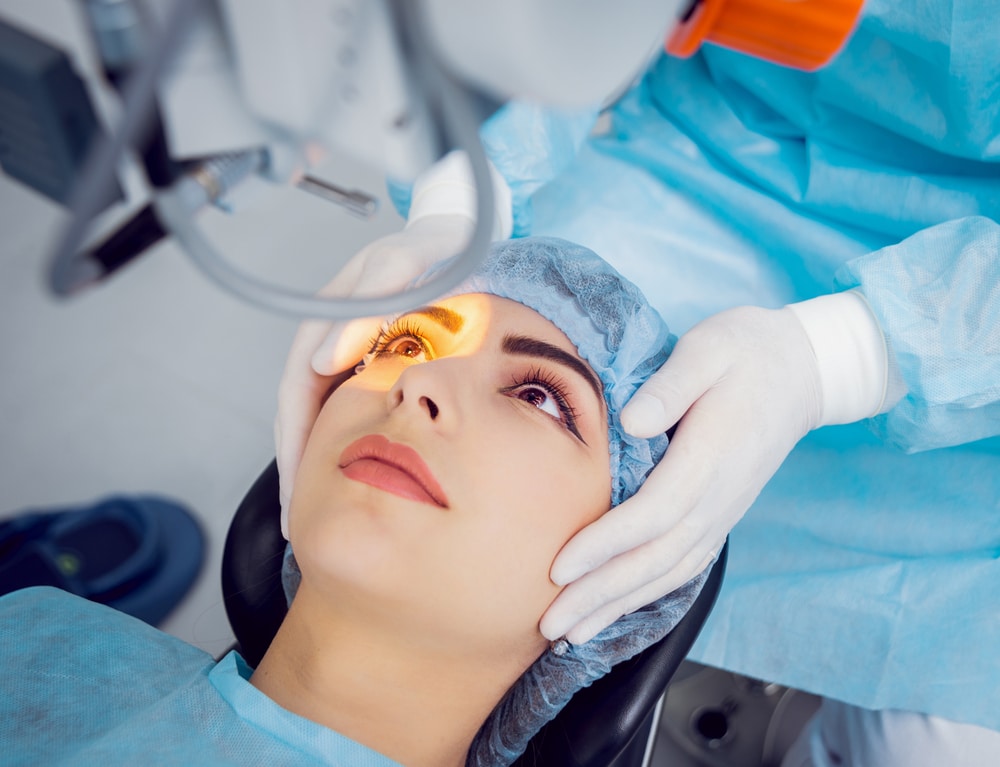What Happens During the LASIK Procedure?

LASIK is a popular laser eye surgery that can correct vision problems like nearsightedness, farsightedness, and astigmatism. Many people consider getting LASIK to reduce their dependence on prescription glasses or contact lenses.
But how exactly does the LASIK procedure work, and what happens during the treatment? Keep reading to learn more about LASIK, including what happens during the procedure!
What is LASIK?
LASIK is a type of refractive surgery that uses lasers to reshape the front surface of the eye, known as the cornea, to compensate for refractive errors. The excimer laser emits a cool ultraviolet light beam that precisely removes tiny amounts of corneal tissue in order to change the shape and bending ability of the cornea.
This improves the way light enters the eye and gets focused on the retina. By controlling the depth and amount of tissue removed, the laser can reduce or eliminate many refractive errors and allow you to live a life with greater visual freedom.
Is LASIK Safe?
LASIK is among the safest, most researched eye surgeries available, with millions of procedures performed worldwide. Modern lasers and advanced diagnostic technology have continuously improved outcomes and reduced most risks and complications.
However, as with any surgery, some risks remain that your eye doctor at Ginsberg Eye will review to determine your candidacy. With over a ninety-five percent satisfaction rate, the benefits of safe, efficient vision correction often far outweigh any minimal risks involved.
What Happens During LASIK?
The LASIK procedure takes about ten to fifteen minutes per eye. First, numbing eye drops are applied to minimize any discomfort.
You’ll lie down on your back, and a device will be positioned over your eye to keep it open during the procedure. Your LASIK surgeon will create a protective corneal flap using a laser or blade.
This flap is folded back to expose the inner corneal tissue. The excimer laser is then precisely positioned and directs ultraviolet light beams onto the cornea to reshape it.
You may see flashing lights and hear clicking sounds as the laser pulses remove tiny amounts of tissue. After the cornea is reshaped, the corneal flap is laid back into position where it adheres without stitches.
Your vision may be blurry right after LASIK but should improve within hours. Both eyes can usually be treated during the same visit.
You’ll need someone to drive you home after surgery. Post-op care involves medicated drops, rest, avoiding rubbing your eyes, and wearing goggles to protect your eyes, especially when sleeping.
You will also need to visit your eye doctor for a series of follow-up visits so they can assess your healing and vision.
How Do I Know if LASIK is Right For Me?
The best candidate for LASIK has healthy eyes, meaning no infections or active eye conditions, is an adult over eighteen years, has had a stable prescription for at least one year, and does not have an extremely high prescription. Additionally, corneal thickness, pupil size, tear production, and eye abnormalities are evaluated.
Your eye doctor will assess your ocular health, goals, and candidacy during a comprehensive exam to determine if LASIK or alternative vision correction surgeries are suitable options for you. Every eye and lifestyle is unique, so your eye doctor will want to ensure that this is the best procedure for you.
Do you want to learn more about LASIK or determine if you may be a candidate? Schedule a LASIK consultation at Ginsberg Eye in Naples, FL, today!





